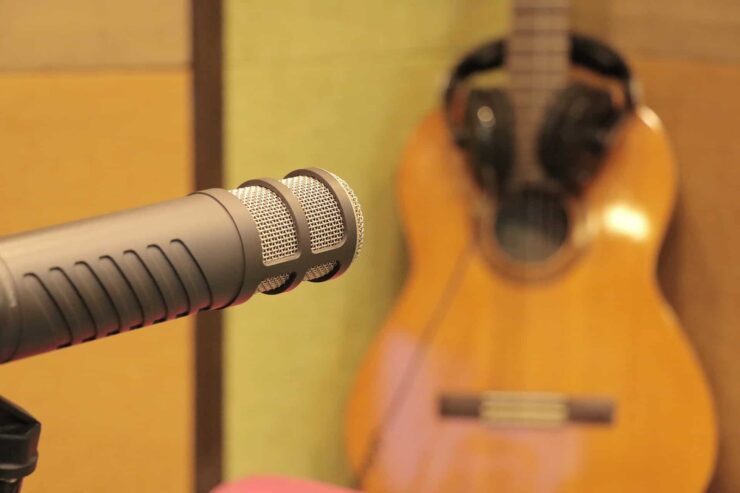Recording a guitar at home is easy, place a microphone in front of an amplifier and hit record. However, achieving a desired perfect tone can take decades.
Guitar tones can vary greatly depending on the player, style of instrument and of course, the recording method. There is no perfect recording technique and often trail by error is the best procedure.
Make sure you’re in tune
It’s simple. Everything played should be in tune and instruments should be of the best possible condition. It is often forgotten that strings and intonation of the instruments make an enormous difference to the end result. For best possible sound strings should be changed and stretched before a recording session.
I asked the Last Minute Musicians community how they went about recording guitars at their home studios.
Compression is your best friend
Having spent a lot of my life in studios I realise I can get the guitar sounds I always longed for at home but it takes time. Only guitar players know how it should sound, and compression is your best friend
Guitarist Steve Bolton
Evening out the guitar’s tone, compression controls the shape and dynamics of the recorded sound. Understanding how to use effectively compression takes years and if used correctly in a mix it is transparent. Guaranteed to improve a guitar tone, compression is an effect that is worth spending time over.
Utilise different guitar tones for different sections
When recording guitars, it is important to do everything possible to avoid an all too easy indistinguishable wall of sound. This is most often the case when recording distorted guitars and can be avoided by using different guitar tones for separate parts.
This can be done by using a different pick up, an entirely different guitar or by playing with a clean sound rather than a distorted one. The final result is going to sound more refined and will be much easier to mix.
Last Minute Musician Ben Smith recommends,
Experiment with mic placement – put cans on and move the mic, or move the guitar in front of it till you find the place it sounds best, then sit still!
Ben Smith
Move the microphones around
Guitar tone’s take time to get right. A musician should be recording everything they are playing and depending where the microphone is positioned on the amplifier, the captured tone can be very different.
There are various tried and tested positions of where microphones can be placed to achieve a good sound. Last Minute Musician Declan Zapala provided a suggestion as to what microphone position works best for him.
A spaced pair of cardioid mics angled at 120° (2 x sE2200a’s have worked well for me) positioned somewhere between 0.75m-1m away depending on how acoustically dry the space is you’re in pick up a really nice evenly spaced sound
Declan Zapala
Read more about fine tuning your room acoustics when recording at home.
Sources:
- http://www.soundonsound.com/sos/aug98/articles/20tips.html
- http://www.articulate.com/rapid-elearning/4-simple-tips-for-recording-high-quality-audio/
- https://www.lastminutemusicians.com/search/recording_rehearsal_studios.html
Do you record guitars? What techniques do you use? Let us know in the comments below!




















